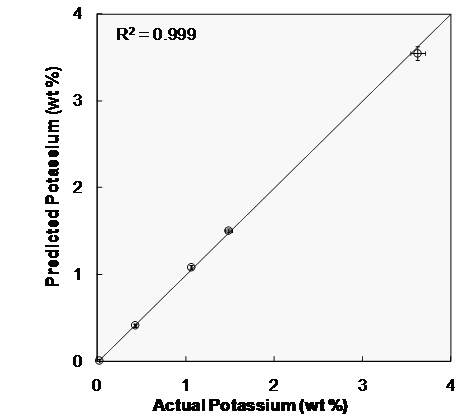
Laser-induced breakdown spectroscopy is explored for the development of an in-situ K-Ar geochronology instrument for Mars. Potassium concentrations in standard basaltic glasses and equivalent rock samples in their natural form are quantified using the potassium doublet at 766.49 and 769.90 nm (2P3/2 → 2S1/2 and 2P1/2 → 2S1/2, respectively). Measurement precision varies from 0.5 – 5.5 (% RSD) over the 3.6 to 0.025% potassium by weight for the standard samples, and little additional precision is achieved above 20 laser shots at 5 locations. The detection limit for potassium is approximately 70 ppm, and the standard error of prediction is 0.04% by weight. The heterogeneity of the rock samples leads to larger variations in potassium signal; however, normalizing the potassium peak by base area at 25 locations on the rock resulted in a calibration that was similar in accuracy to the standard glass samples. Including only errors in LIBS measurements, expected accuracies are 3000 ± 45 Ma and 100 ± 3 Ma for geologically old and young rocks, respectively.
